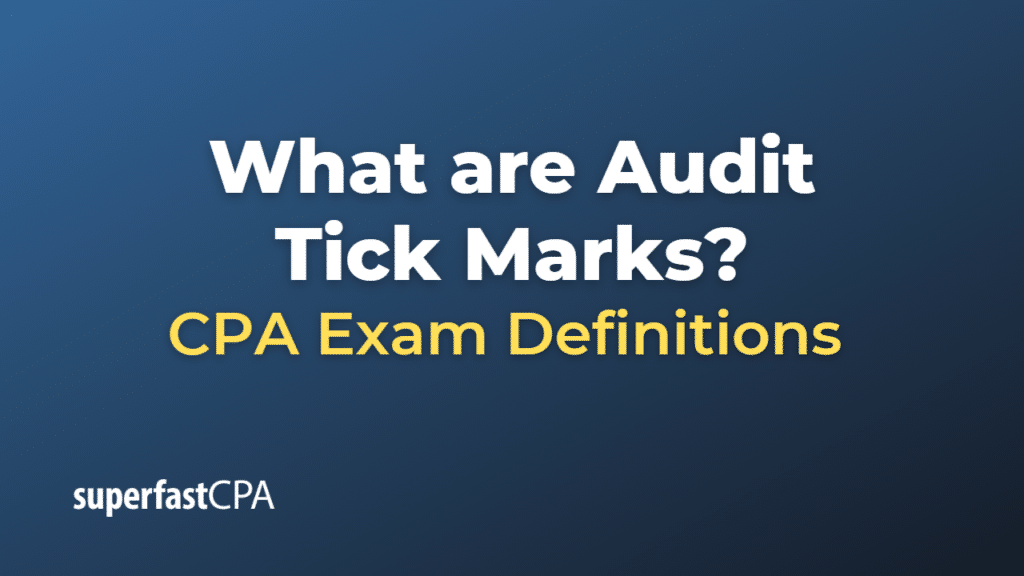Audit Tick Marks
Audit tick marks are symbols or notations used by auditors during the audit process to document their work, indicate the completion of specific audit procedures, or provide explanations for certain items within the working papers. Tick marks serve as a shorthand method for auditors to communicate their findings and work efficiently.
Each audit firm may have its own set of tick marks, which can vary in style and meaning. However, some common tick marks include:
- ✓ or √: Indicates that the auditor has verified or confirmed the item or transaction.
- ⊗ or X: Indicates an error, discrepancy, or exception found during the audit.
- ⟷ or ↔: Signifies a comparison between two items, such as a matching of invoice and payment.
- ↑ or ↓: Shows that the auditor traced the item to another document or schedule.
- T: Indicates that the item has been totaled, or the mathematical accuracy has been checked.
- C: Represents that the auditor has checked the item for completeness or compliance.
- I: Denotes that the auditor has inspected the item or document.
- V: Suggests that the auditor has performed a vouching procedure, tracing a transaction from the general ledger to the source document.
Auditors may also create customized tick marks for specific audit procedures or clients. It is essential to maintain a key or legend within the audit working papers to ensure that all members of the audit team understand the meaning of each tick mark.
Example of Audit Tick Marks
Let’s assume that an auditor is conducting an audit of a company’s accounts payable. Here’s an example of how tick marks might be used to document the auditor’s work on a sample invoice:
- Invoice number: The auditor might place a ✓ next to the invoice number, indicating that it has been verified against the company’s records.
- Invoice date: The auditor may place a ⟷ next to the invoice date, signifying that the date has been compared to the company’s purchase order or receipt date to ensure accuracy.
- Vendor details: The auditor could place a C next to the vendor’s name, denoting that the vendor’s details have been checked for completeness and accuracy.
- Invoice amount: The auditor might use a T next to the invoice amount, showing that the amount has been totaled and its mathematical accuracy has been checked.
- Payment details: If the auditor finds a discrepancy between the invoice and the payment details, they may place an X next to the payment information to indicate the exception found.
These tick marks serve as a communication tool for the auditor, allowing them to efficiently document their work and findings. It is crucial to maintain a key or legend within the audit working papers to ensure that all members of the audit team understand the meaning of each tick mark.













